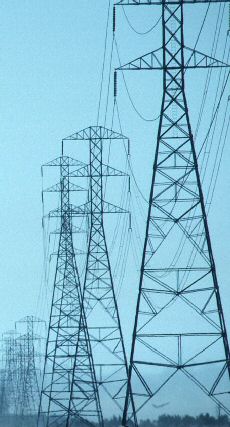26 July 2004
New Technology Heralds Smaller, Cooler Fuel Cells
by Kate Melville
 New technology in thin film solid oxide fuel cells (SOFCs) currently being refined at the University of Houston (UH) could make cheap, efficient fuel cells a reality. Originating from research at UH's Texas Center for Superconductivity and Advanced Materials (TcSAM), these SOFCs of the "thin film" variety are both efficient and compact.
New technology in thin film solid oxide fuel cells (SOFCs) currently being refined at the University of Houston (UH) could make cheap, efficient fuel cells a reality. Originating from research at UH's Texas Center for Superconductivity and Advanced Materials (TcSAM), these SOFCs of the "thin film" variety are both efficient and compact.
"By using materials science concepts developed in our superconductivity research and materials processing concepts in our semiconductor research, we are able to reduce operating temperatures, eliminate steps and use less expensive materials that will potentially revolutionize from where we derive electrical energy," said Alex Ignatiev, director of TcSAM. "While there are a number of fuel cell research programs at the university, ours focuses on the application of thin film science and technology to gain the benefits of efficiency and low cost."
Compared to the size of traditional fuel cells that can take up an entire room, thin film SOFCs are one micron thick - the equivalent of about one-hundredth of a human hair. Putting this into perspective, the size equivalent of four sugar cubes would produce 80 watts - more than enough to operate a laptop computer.
Keeping in mind that one thin film SOFC is just a fraction of the size of a human hair with an output of 0.8 to 0.9 Volts, a stack of 100 to 120 of these fuel cells would generate about 100 volts. When connected to a homeowner's natural gas line, the stack would provide the needed electrical energy to run the household at an efficiency of approximately 65 percent. This would be a twofold increase over conventional power plants, operating at 30 to 35 percent efficiency. Stand-alone household fuel cell units could form the basis for a new 'distributed power' system. In this concept, energy not used by the household would be fed back into a main grid, resulting in a credit to the user's account, while overages would similarly receive extra energy from that grid and be charged accordingly.
"The initial applications of our thin film fuel cell would probably be for governmental entities," Ignatiev said. "For instance, once the preliminary data satisfies the Department of Defense, we could see our fuel cell research in action in the backpacks of soldiers, replacing heavy batteries to power their computers and night vision goggles and such."
"NASA also is very interested in this research mainly because of the weight and size factors," he said. "Thin film SOFCs offer light, compact, low mass properties of significant interest to them. Right now, the shuttle routinely uses fuel cells that require ultrapure oxygen and hydrogen, use exotic materials and are massive and large. But the thin film SOFCs we are developing at UH are not as sensitive to contaminants and are highly efficient in their design and lightweight size, which is ideal for space applications."
Inherent to the more efficient design of these "cool" fuel cells is quite literally the fact that they operate at a much lower temperature than other solid oxide fuel cells, yet do not need a catalyst. Despite their 60 to 70 percent efficiency, SOFCs, in general, operate at 900 to 1,000 degrees Celsius, a very high temperature that requires exotic structural materials and significant thermal insulation. However, the thin film solid oxide fuel cell has an operating temperature of 450 to 500 degrees Celsius, one half that of current SOFCs. This lower temperature is largely a result of the drastically decreased thickness of the electrolyte-working region of these thin film SOFCs and negates the need for exotic structural materials and extensive insulation. The lower temperature also eliminates the need for catalysts (known as reformers) for the fuel cell. All of these features promise a reduced cost for the thin film SOFC. Ignatiev anticipates that what he and his colleagues have been developing in UH's TcSAM laboratories will advance to the testing phase within the next six months.
